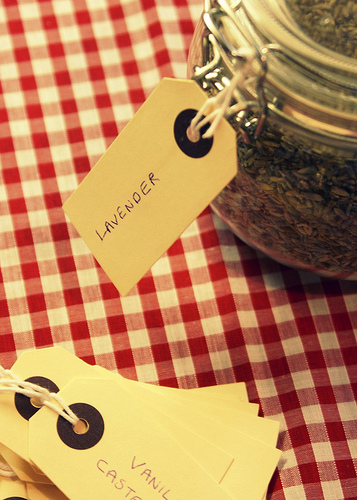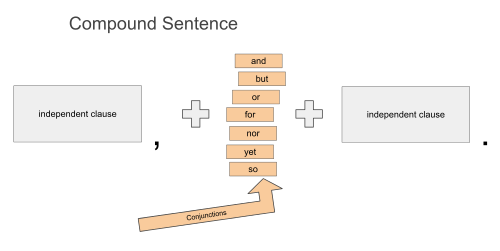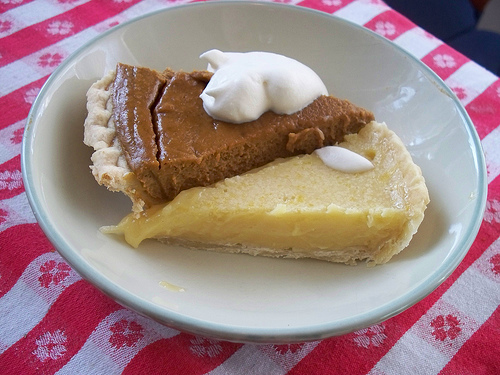
Source: Labels, Anne, Flickr
You can label sentences in many ways. You can label them for the number of words they contain. You can label them as sentences that start with the subject or sentences that start with an introductory phrase or clause. You can label them according to the number of syllables they contain. All these ways of labeling could give you information about your sentence variety and a direction for revision.
In this lesson, you will be concerned with the variety of sentence structures. By “sentence structure,” we mean the basic ways sentences are constructed as follows:
- Simple sentences
- Compound sentences
- Complex sentences
- Compound-complex sentences
Your objective in this lesson is to revise for sentence variety. However, this doesn’t mean having an equal number of sentences of each type. Your primary concern is to avoid having a predominant number of simple sentences. Therefore, in this lesson, your labeling will not distinguish between compound sentences, complex sentences, or compound-complex sentences. It will only distinguish between simple sentences and “non-simple” sentences.
Being able to identify compound, complex, and compound-complex sentences will still be important in this lesson, though. You will need to identify these sentence types as “non-simple” sentences. This is not always easy, especially when you come across sentences with compound subjects and/or compound predicates.
(For further review on this topic, check out Strengthen Sentence Variety/Sentence Combining and Using a Variety of Correctly Structured Sentences – Compound, Compound Complex in the Related Resources.)

Source: *Compound Sentence, Steven Pavlov, Wikimedia
Compound Sentences and Compound Parts
Read these two sentences and click on the one you think is a simple sentence.
Try the next two sentences. Identify each as either a simple sentence (may contain compound subjects or verbs) or a compound sentence (two or more complete sentences joined by a comma and a conjunction). Click on your response.

Grammar Talk: Let’s pause to consider the clause. A clause is a group of words that has a subject (singular or compound) and a predicate (singular or compound). A simple sentence has one clause. Since the clause in a simple sentence can stand by itself, it is called an independent clause.
Complex Sentences

Source: Pie, Pie, Me oh My, I love Pie!, Alyss, Flickr

Source: Cake!, Jill Siegrist, Flickr
It may seem like some of the sentences you have already looked at are complicated. Certainly you have seen long sentences and sentences with several parts clustered together.
A compound sentence and a complex sentence appear below. Read them, and then click on the one you think is a compound sentence.

Source: Train coupling, Daniel Schwen, Wikimedia Commons
Notice that if you move the independent clause (everything preceding the comma) to the end, the sentence doesn’t work. You end up with “But any time is the right time for pie, cakes are appropriate only on certain occasions.” So, the clauses cannot be reversed. Also, notice that a comma and a coordinating conjunction connect the two independent clauses, similar to two train cars being connected with a coupler.

Source: Faded Glory, Beedle Um Bum, Flickr
On the other hand, the subordinating conjunction “Although” is part of a dependent clause from the very start. This is like a semitrailer being loaded onto a flatbed train car: The semitrailer becomes a part of the train car. You will notice that the two clauses of the complex sentence can be reversed. If we reverse them, we end up with “Any time is the right time for pie, although cakes are appropriate only on certain occasions.”
Grammar Talk: One way to test whether a sentence part is a subordinate clause is to see if it can be changed to a different position in the sentence.
Read the three sentences below. Identify each as one of the following:
- A simple sentence (may contain compound subjects or verbs)
- A compound sentence (two or more sentences joined by a comma and a coordinating conjunction)
- A complex sentence (an independent clause and at least one dependent clause joined by a subordinating conjunction)

Compound-Complex Sentences
Now we are going to get fancy and try to put two complex sentences together with a coordinating conjunction (and, or, but, etc.) to make a compound-complex sentence (two or more independent clauses with at least one dependent clause). In this case, the compound-complex sentence will contain more than the required number of dependent clauses.
Read the sentences below and click on the one that you think is a compound-complex sentence.
Read the sentences below and choose simple sentence or non-simple sentence for each one.
